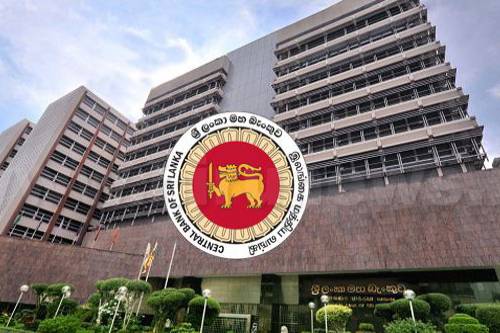The Central Bank is optimistic that the economy will grow between four and four and half percent in 2020 given the political and economic stabilisation measures introduced by the new government aimed at accelerating economic growth in the coming year and beyond.
“We are confident the economy will be revived and the growth momentum will continue in the coming year and thereafter, following the raft of fiscal stimulus measures introduced recently to spur economic growth coupled with political stability restored after elections,” said Central Bank Governor Prof. W.D. Lakshman who took over the mantle of the esteemed institution from Dr. Indrajit Coomaraswamy last week.
Speaking at the last monetary policy review of the bank for the year, he said recording an economic growth rate of over four percent in 2020 and over six percent beyond that is possible with strong macroeconomic fundamentals in place to withstand the internal and external challenges.
The new government has set a target of achieving over six percent economic growth beyond 2020 with a mid and long term broad economic policy framework which is expected to be announced by the President when parliament convenes on January 3.
However, economists and financial experts cast aspersions as to how the policy makers could achieve a higher growth figure of over six percent given the staggering outstanding external debt repayment up to 2024 and strong external headwinds projected by global donors, think tanks and rating agencies who have downgraded growth figures in many advanced economies.
Sri Lanka notched an economic growth rate of 2.7 percent in the third quarter this year and it is likely to end the year with a growth rate below three percent, a sharp dip from the pre 2015 growth figures of over five percent.
When asked as to how the debt dynamics would have an effect on the economy in the coming years, Central Bank Senior Deputy Governor Dr. Nanadalal Weerasinghe said total outstanding external debt for 2020 is US$ 4.8 billion of which payment is due in October next year and added the country has raised sufficient money to make repayments.
However, with regard to the financing plan he said the government will have to decide how and when it is going to raise money either from commercial markets or by resorting to other funding instruments.
Responding to the downgrading by Fitch last week he said it was too early for Fitch to make observations and added that it was only a revision of the outlook on sovereign credit.
The Sri Lanka’s outlook on sovereign credit was downgraded to ‘negative’ from ‘stable’ by Fitch over recent tax cuts but confirmed an underlying rating of ‘B’.
However, former Central Bank Governor Dr. Coomaraswamy at the last monetary policy review that there was scope and justification for a fiscal stimulus package with room for some infusion in aggregate demand to spur economic growth in the country.
On the Central Bank Act, Central Bank officials said the Amendment Bill was presented to the previous parliament and added that it is up to the new government to look at it and make amendments.
“The objective of the amendments are to institutionaliSe the monetary policy framework. What could delay is the governance structure which will only be operational when the law is enacted,” a senior official of the Central Bank said.
An official of the non bank supervision department of the Central Bank said the bank is trying to float an Expressions of Interest soon providing a limited timeframe for investments to revive The Finance Company.
However, the new Central Bank governor is to try alternative measures to accelerate economic growth from its current sluggish and subdued figure.
“With so many questions raised on the Washington Consensus and neo liberal policies I am excited about finding alternative ways to spur economic growth,” Prof. Lakshman said adding that engagement with the International Monetary Fund will be within the national policy.
The Central Bank decided to leave its key interest rates unchanged maintaining an accommodative monetary policy stance at its seventh monetary policy review last week.
The Standing Deposit Facility Rate (SDFR) and the Standing Lending Facility Rate (SLFR) will remain at their current levels of 7.00 percent and 8.00 percent, respectively.
The Board said it arrived at this decision following a careful analysis of current and expected developments in the domestic economy and the financial market as well as the global economy.
(Sunday Observer)

